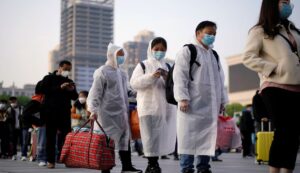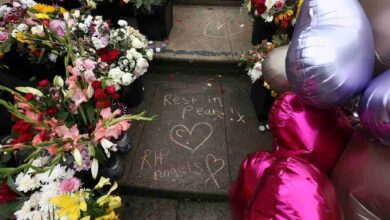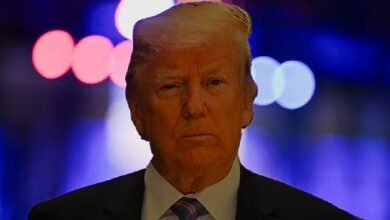A new study confirms that Covid emerged in a Chinese market
Covid: On Thursday, more data from a study of the origins of the pandemic was published and provided further evidence in favor of the theory that the viral infection was transmitted from animals to humans in the Chinese wet market in 2019.

Almost five years after the emergence of the Covid virus, the international community has still not been able to provide an exact answer on how the virus originated.
The first patients were identified in the Chinese province of Wuhan at the end of 2019, but supporters of the two dominant hypotheses have always held differing views.
One is that the virus escaped from a Wuhan laboratory that was conducting research on similar viruses, while the other is that people picked up Covid from a swine that was infected and sold in a local market.
The latter position was, however, surprisingly supported by the professionals, yet some arguments persist.
As reported in the Cell journal, over 800 specimens were collected from a “wet” market in Wuhan’s Huanan, where it was speculated that imported exotic animals were also being sold.
Once the market was shut down in January 2020, biologists took samples from sewers and the wildlife stalls, horse trading benches, and vendor surfaces, not from animals or people.
As per the statement made by one of the study’s authors, Florence Debarre, it is not possible to say, “For sure, it comes from the data given to us by the Chinese authorities, but yes, it is clear that we cannot say definitely whether those animals (present at the market) were the infection sources or not.”
But in relation to this marketplace in Wuhan, I should note that there have been and will be plenty of controversies as well regarding the presence of fair and wild animals at that market in December 2019, respectively, and regarding our conclusions. In France’s CNRS research agency, evolutionary biologist Even Garcia brought along conservation efforts seeking research aid.
“Additionally, in the corner of the market near the place where those animals were found, a significant amount of SARS-CoV-2, which is responsible for Covid-19, was detected.”
It has been suggested that these small animals are infected with viruses, not unlike those that cause sickness in people; thus, they are thought of as some intermediate host of SARS-CoV-2 within the chain of transmission of the virus from bats to humans.
Still, evidence exists, including some pictures as well as one investigation from 2021. But hitherto there existed controversies regarding the presence of such animals at Huanan Market. “The evidence is unbelievably strong.”
In one of the studies, it is reported that “among other items that were tested positive for the COVID for one stall included animal carts, a cage, a garbage cart, and a hair/feather removal machine.”
According to a statement, ‘Most DNA in these samples belonged to species of wild mammals than that of humans.’”
The positive samples of the Covid cases taken from this stall possessed mammalian DNA like raccoon dog, bamboo rat and palm civet.
As interpreted from the study, “These data indicate either that early unreported human case(s) of Covid-19 viruses were spilled in the very area where the animals were detected or that the animals present at this stall spewed the SARS-CoV-2 identified on animal tools.”
Further, the investigation reveals that the Covid virus strain which was contained in harvested from market samples did not evolve very far back and the closest ancestral strain to it was obtained during market sample collection.
For Debarre, “this means that the market is where the virus early on evolves assemblages of stocks rather than remaining mingled with the general population—as it should be, if the market is indeed the place of onset.”
The study “provides very strong evidence for wildlife stalls in the Huanan Seafood Market in Wuhan being epicenter of where the COVID-19 pandemic began,” said James Wood, an infectious disease epidemiologist from Cambridge University who was not associated with the study.
“Very little in fact has been done to address the live wildlife trade and biodiversity crisis, which backward and forward-pointing pandemics emerge out of and environmental change,” he continued on why the research was important.
He argued that these aspects are also not included in the draft pandemic treaty that countries are negotiating at the moment.





